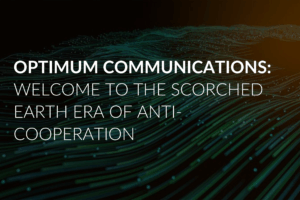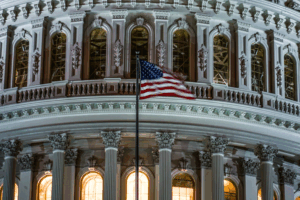
Thames Water: Another Fine Mess
Helen Rodriguez - Head of European Special Situations, CreditSights
Andrew Moulder - Head of Utilities, CreditSights
3 June 2025
Insights into Thames Water’s Financial and Regulatory Challenges
- Regulatory Pressures and Compliance: Explore the impact of recent fines and negotiations with Ofwat on Thames Water’s regulatory strategies.
- Post-KKR Exit Investment Landscape: Analyze how KKR’s departure influences investment dynamics and potential bids from competitors.
- CMA Referral and Market-Led Solutions: Investigate the CMA’s role in shaping Thames Water’s pricing and operational strategies.
- Managing Liquidity and Creditor Relations: Understand Thames Water’s approaches to addressing liquidity issues and engaging with creditors.
- Cunliffe Report and Sector Reforms: Evaluate how the Cunliffe Report’s recommendations might alter the regulatory framework and investment priorities in the UK water sector.
We may never know if it was last week’s fine and the inevitable drip of more fines to come, the idea that with Ofwat, there was always going to be three people in the marriage, a spat with the creditors, or the scale of the profitability challenge embodied in management’s turnaround plan. Or maybe just the ‘who needs this’ headache of it all, but in any case, we are where we are. Unless, of course, this is gamesmanship ahead of the Ofwat/Environmental Agency talks this month. One thing is absolutely certain though, the UK government does not want Thames in the UK public budget. We can be sure that the governmental arrows will be strenuously pointing back to the “market-driven” drawing board and it remains to be seen if the KKR exit has any influence on the Ofwat stance.
Discussions between Thames Water, the Environment Agency, and Ofwat in June 2025 were expected to have been an attempt to hash out enough of a compromise to avoid a CMA referral process, given the context of the KKR bid. One of the key matters was expected to be a request for regulatory relaxation, given the extent of penalties that Thames Water could face and the possible disruption of any LBO liquidity model. It is not beyond the realms of possibility that this move is KKR signalling that the lack of visibility inherent in the UK water sector regulatory framework encompassing both PR24, ODIs and fines does indeed render Thames “uninvestible”. In truth, what the Thames investment case needs is a one off settlement to clear the risk of possible future fines and regulatory cash drains. Instead, what Thames has is a price-setting goal post on the one hand and a fine-mechanism goal post on the other, making any liquidity modelling a challenge. It remains to be seen what, if anything, comes out of these discussions.
Back to the CMA?
Following discussions with Ofwat, Thames Water and Ofwat agreed on 18 March 2025 to defer Thames Water’s reference to the CMA for a period of up to 18 weeks (~22 July 2025). Thames had applied for this deferral to its CMA reference to keep its options open given the uncertainty created by a potential twelve months timeline for such a referral (July 2026 deadline). Perhaps overly optimistic, the hope was of a “market-led” solution for the recapitalisation without the need for CMA input, although why new money would prefer to forego the chance of a better pricing regime is a pertinent question, despite the uncertainty the referral process would cause.
If no resolution emerges from discussions, Ofwat will proceed with the reference of the FD and Thames Water’s price control will be re-determined by the CMA. Thames had said in its referral to the CMA, that “it is clear that there remain significant gaps between the Final Determination and what it needs to deliver for customers and the environment.”
It is seeking:
A regulatory settlement that reflects the circumstances of Thames Water’s operating area
Targets that are challenging but achievable
An appropriate balance of risk and return



